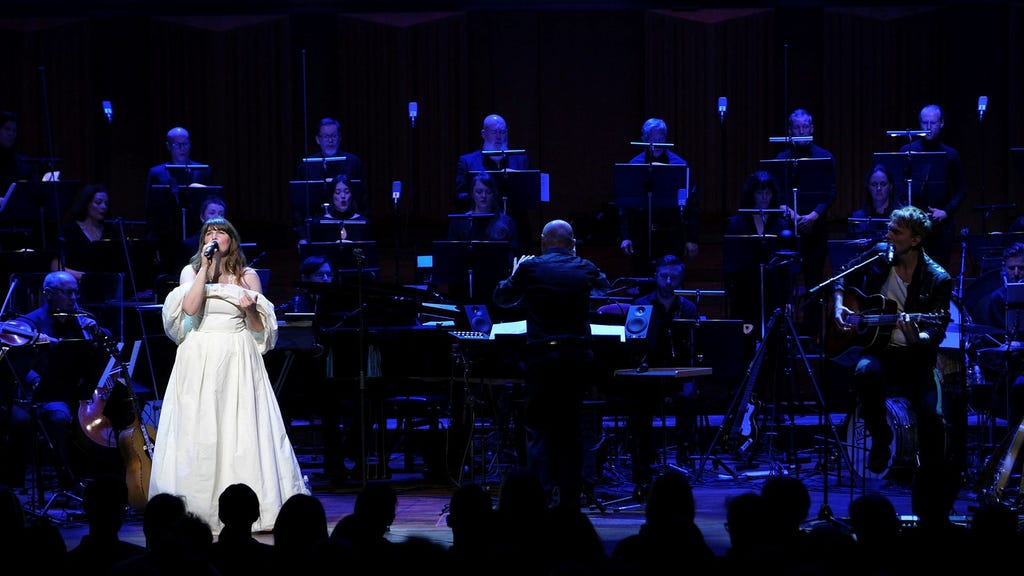Lana Del Rey’s concert at the Berwaldhallen, a hallowed venue known for its pristine acoustics and association with classical music, was an event pregnant with expectation. The juxtaposition of Del Rey’s melancholic, often cinematic pop with the formal grandeur of the Berwaldhallen promised a unique and potentially transcendent experience. This ambitious undertaking sought to elevate her signature brand of Hollywood-infused nostalgia and introspective lyricism, framing it within a context traditionally reserved for compositions of a different era and genre. The very choice of venue suggested an attempt to recontextualize Del Rey’s music, perhaps even legitimizing it within the highbrow realm of classical music. The potential for a truly memorable performance, a collision of contrasting aesthetics, was palpable. However, the reality fell short of the lofty aspirations, resulting in a concert that, while possessing moments of brilliance, ultimately failed to capitalize on its inherent potential.
The concert’s shortcomings stemmed from a variety of factors, chief among them a disconnect between Del Rey’s performance style and the formal setting. While her languid, almost ethereal stage presence often works well in larger, more conventional concert venues, it felt strangely subdued within the confines of the Berwaldhallen. The intimacy of the venue, designed to amplify the nuances of orchestral performances, seemed to swallow her performance whole, leaving her struggling to connect with the audience on a visceral level. The hushed reverence typical of a classical music audience further contributed to this disconnect, creating a sense of detachment that permeated the performance. Del Rey’s signature melancholic delivery, often interpreted as vulnerability and emotional depth in other settings, seemed to lose its impact in the vastness of the hall, leaving a void between artist and audience. The performance lacked the energy and dynamism necessary to bridge this gap, resulting in an experience that felt strangely sterile despite the inherent emotional weight of the material.
Compounding this issue was the orchestral arrangement itself. While intended to add depth and complexity to Del Rey’s already richly textured music, it often felt overwrought and intrusive. The delicate balance between the orchestral accompaniment and Del Rey’s vocals was frequently lost, with the orchestra sometimes overpowering her voice, burying the nuances of her performance beneath a wave of sound. At other times, the arrangements felt unnecessarily elaborate, distracting from the core melodies and lyrical content that form the heart of Del Rey’s work. The orchestral additions, while technically proficient, often lacked a sense of cohesion with the original material, failing to create a truly synergistic experience. Instead of enhancing the emotional impact of the songs, the orchestral arrangements often diluted them, leaving the audience with a sense of something lost in translation.
Furthermore, the setlist itself contributed to the concert’s overall unevenness. While featuring a selection of fan favorites and deeper cuts from her extensive catalog, the sequencing of the songs felt somewhat haphazard, lacking a clear narrative arc. The ebb and flow of emotional intensity that characterizes Del Rey’s albums was lost in the live performance, replaced by a sense of disjointedness that prevented the concert from building to a truly satisfying climax. This lack of cohesion further exacerbated the disconnect between the artist and the audience, hindering the creation of a shared emotional experience. While individual songs shone brightly, showcasing the enduring power of Del Rey’s songwriting, they failed to coalesce into a cohesive whole, leaving the audience with a sense of unfulfilled potential.
The technical aspects of the production also played a role in the concert’s shortcomings. While the sound quality within the Berwaldhallen is generally impeccable, on this occasion, there were noticeable issues with the balance between the vocals and the instruments. As mentioned previously, the orchestra frequently overwhelmed Del Rey’s voice, rendering some of her more nuanced vocal performances inaudible. This technical imbalance further detracted from the overall experience, highlighting the disconnect between the artist and the orchestral accompaniment. The lighting design, while aesthetically pleasing, also lacked the dynamism and dramatic flair that one might expect from a Lana Del Rey performance. The static nature of the lighting further contributed to the overall sense of subdued energy, failing to create the visually compelling atmosphere that typically accompanies her concerts.
In conclusion, Lana Del Rey’s concert at the Berwaldhallen was a missed opportunity. While the ambition of the project was commendable, the execution fell short of the mark. The disconnect between Del Rey’s performance style and the formal setting, the often-overwrought orchestral arrangements, the uneven setlist, and the technical issues all contributed to a concert that felt strangely underwhelming. While glimmers of Del Rey’s undeniable talent shone through, they were ultimately overshadowed by the concert’s inherent flaws. The performance, instead of elevating Del Rey’s music to new heights, ultimately served to diminish its impact, leaving the audience with a sense of what could have been. The grand experiment of bringing her melancholic pop to the hallowed halls of the Berwaldhallen ultimately proved to be a noble, yet ultimately unsuccessful, endeavor. The potential for a truly magical evening was palpable, but the execution failed to live up to the lofty expectations, leaving the concert as a curious footnote in Del Rey’s career, a testament to the challenges of marrying disparate artistic visions.














